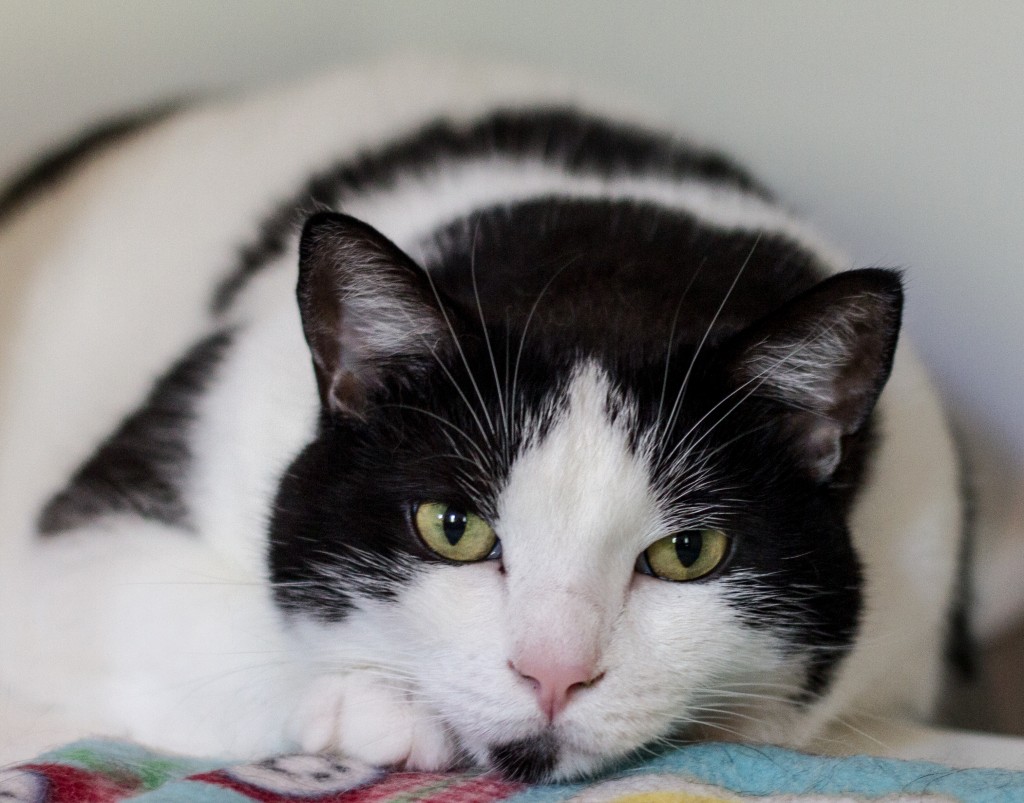 Wellness is all about giving your cat the best life possible. This includes supporting good health and preventing illness before it can develop. The most important part of cat wellness is a yearly veterinary exam. The yearly check-up allows us to look for subtle signs that your cat is developing a health problem. If a problem is detected early, we can get started on fixing it before it becomes a serious illness. It is also an opportunity to talk with you about your cat’s diet, lifestyle, and how to work on any behavior issues your cat may be having, and for you to ask any questions you have about your cat’s health.
Wellness is all about giving your cat the best life possible. This includes supporting good health and preventing illness before it can develop. The most important part of cat wellness is a yearly veterinary exam. The yearly check-up allows us to look for subtle signs that your cat is developing a health problem. If a problem is detected early, we can get started on fixing it before it becomes a serious illness. It is also an opportunity to talk with you about your cat’s diet, lifestyle, and how to work on any behavior issues your cat may be having, and for you to ask any questions you have about your cat’s health.
Partners for Healthy Pets has some excellent information about yearly check-ups for your cat.
This short video explains why cats need veterinary check-ups:
What can a vet tell about my cat from a physical exam?
If you watch Dr. O’Driscoll examining your cat, you may think most of it just looks like a kitty massage. But a physical exam can give an enormous amount of information about a cat’s health. Here is some of what she is looking and feeling for during an exam:
- Body condition (overweight or underweight)
- Mental state (alert, disoriented, depressed, nervous, etc.)
- Gait (how the cat moves, any limping, etc.)
- Signs of dehydration (sunken eyes, loss of skin elasticity, and sticky gums)
- Ear discharge, infection or itchiness
- Facial symmetry
- Eye discharge or redness
- Abnormal eye movements, pupil size
- Broken teeth, tartar, gingivitis, bad breath, mouth pain
- Nasal congestion or discharge
- Signs of brain disease (by testing facial reflexes)
- Size of thyroid glands in neck
- Size of lymph nodes (under chin, in front of shoulder blades, and behind knees)
- Heart beats per minute
- Heart rhythm
- Heart sounds (need a stethoscope for this)
- Pulse quality (by feeling femoral artery in back leg)
- Breaths per minute
- Lung sounds (stethoscope again)
- Respiratory effort
- Size of liver and spleen
- Size and shape of kidneys
- Size of bladder
- Any lumps or fluid in the abdomen that shouldn’t be there
- Abnormal intestines (yes, intestines can feel “wrong”)
- Evidence of diarrhea, parasites, discharge or other issues around the hind end
- Any joint swelling or pain, any back pain
- Any skin lumps, bumps, itchiness, or hair loss
- Presence of fleas or ticks
- Torn or overgrown toenails
That’s not everything that a physical exam can discover, but you get the idea. Also, it is possible to discover a lot about a cat’s health status by talking with an owner about the cat’s habits at home – that’s why we ask so many questions about what your cat eats and when, litterbox habits, etc.
What is routinely recommended at a healthy cat’s yearly check-up?
If the physical exam is all normal and a cat is not having any problems at home, recommended wellness care includes a rabies vaccine, a fecal exam (looking at a specially-prepared poop sample under the microscope for intestinal worm eggs), and flea and heartworm prevention (usually a monthly topical medication). We recommend the FVRCP vaccine every 3 years. Depending on a cat’s lifestyle, they may also need a feline leukemia vaccine. If a cat has never been tested for feline leukemia virus (FeLV) and feline immunodeficiency virus (FIV), a test is recommended (it takes a small blood sample and about 10 minutes). Kittens of course have a different schedule of wellness care in the first few months of life, and older cats may need a complete blood count, chemistry panel, and blood pressure checks at their yearly wellness visits in addition to the items above.




